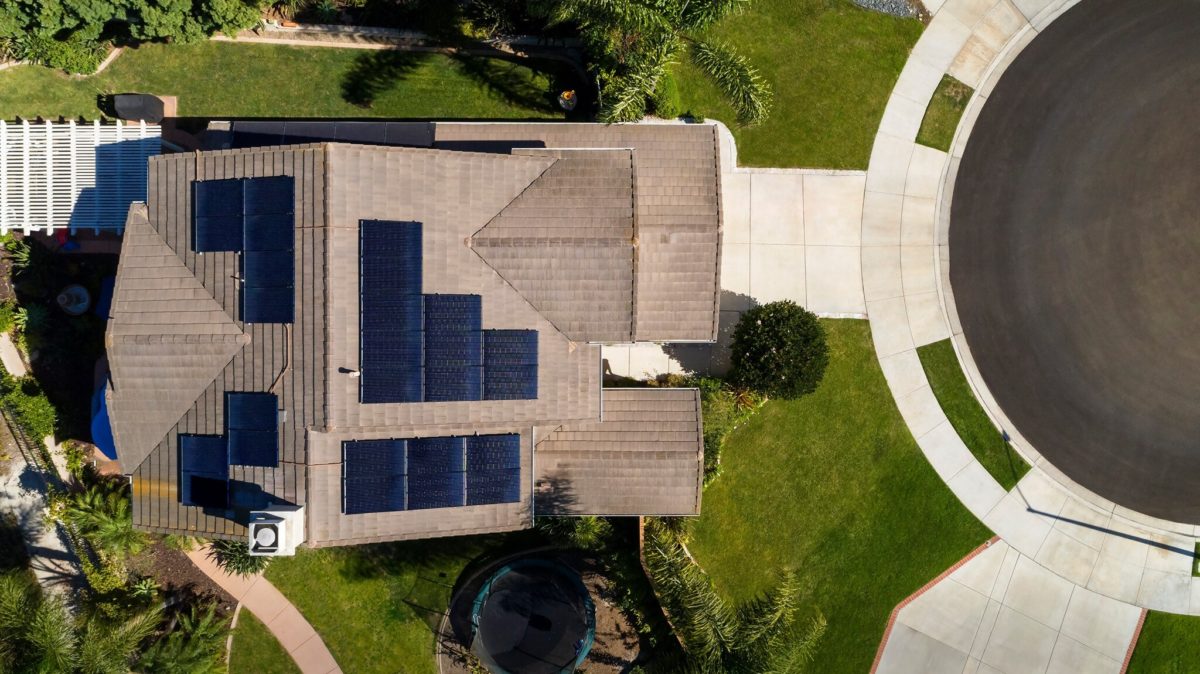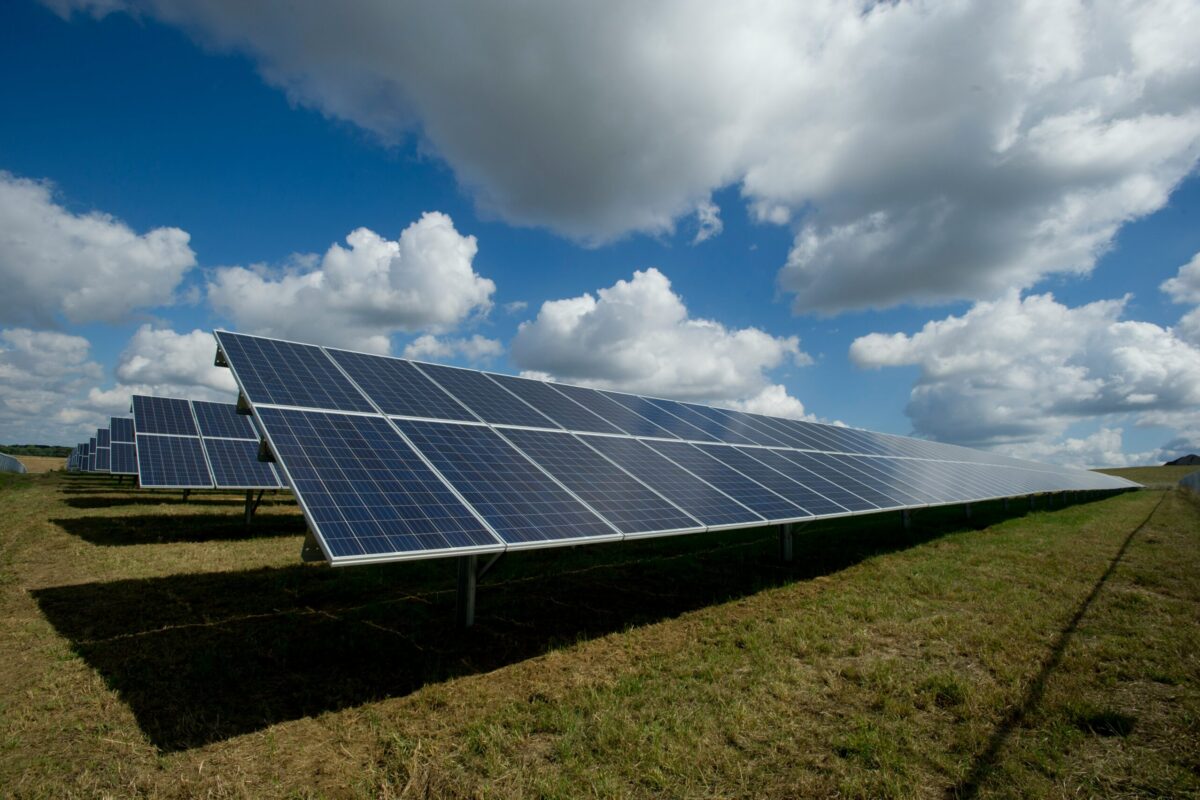Texas has a unique electric grid. Its grid operation organization, ERCOT, is independent of other states and deregulated, making the state open for business for a market-based approach toward energy generation and transmission.
Texas has been a favorite among utility-scale solar PV developers for a long time, thanks to its business-friendly environment and its lack of substantial local permitting regimes. The state is also operating as a proving ground for the buildout of a more nascent industry: virtual power plants (VPP).
VPPs are defined by their distributed and connected nature. Rather than transmitting power over long distances from a centralized power plant, VPPs use smart software to control a variety of connected energy assets like rooftop residential solar, battery energy storage, smart heating and cooling, and appliances. Homeowners with eligible VPP assets are compensated for exporting power or reducing use at electricity demand events throughout the year.
A panel of experts at the RE+ Texas conference in Houston, spoke on VPP progress in the state. The discussion opened with Stuart Page, senior consultant, Department of Energy (DOE) Loans Program Office asking the audience whether they were currently enrolled in a VPP program. Only two people in a room of hundreds raised their hands. Page then asked how many in the audience had heard of VPP, and most conference attendees raised their hands.
“I bet every single one of you has an energy resource or utilization than can be controlled by an app,” said Page. “Yet none of you are enrolled, despite the fact that there are discounts with your electric bill associated with it.”
Page said that part of the issue with VPP participation is the complexity of programs. Often, they require an opt-in, where the customer must choose to join the VPP program. Page said that VPP providers should instead choose an opt-out model, where customers are automatically enrolled in the program when they buy a smart device like a thermostat or a home battery. He cited a DOE experiment where an automatic enrollment model with an opt-out option increased participation by 400%.
So why are virtual power plants important? VPPs enable intelligent, local distribution of power, sending what is needed when it is needed. VPPs typically support reducing electricity use during times of peak demand, providing a critical service that may be one of the most important low-hanging fruits to pick in the nation’s progress towards decarbonizing energy and lowering energy costs.
VPP technology has shown immediate promise in replacing natural gas “peaker plants” on grids, replacing or preventing the buildout of new resources that are among the dirtiest, most expensive, and least efficient on the grid today.
The virtual power plant commercial liftoff report released by the Department of Energy said that between 2023 and 2030, coincident peak demand on the grid will rise by about 60 GW, from roughly 740 GW to 800 GW of demand.
“At the same time, fossil assets are retiring,” said the report. “Roughly 200 GW of peak-coincident demand must be served with new resources coming online by 2030. Tripling the current scale of VPPs could address 10-20% of this peak demand. This could avoid about $10 billion in annual grid costs, and much of the money that is spent on VPPs would flow back to participating consumers.”
Texas proving ground
Even in a room full of energy industry members and experts, almost nobody attending the RE+ Texas panel session admitted to being enrolled in a VPP. The biggest barrier to adoption has been the creation and implementation of a standardized VPP program, which many states lack.
To automatically enroll customers at the point of purchase as Page suggested, a program needs to be in place to enable it. Sterling Clifford, director of government affairs, Sunnova Energy, a VPP provider shared that many state utility regulators have said VPP technology is a “long way off.”
“But it doesn’t have to be,” said Clifford. “The beginning of the process to the launch of the product was 12 months (in Texas).”
Texas already has 16 MW of energy resources and 7 MW of non-spin flexible demand enrolled in VPP programs.
Part of what enabled such a quick launch of the program was necessity. Ryan King, manager, market design, for the ERCOT said the catastrophic Winter Storm Uri in early 2021 forced the grid operator to look for new sources of reliable, dispatchable supply at the distribution level, while reducing transmission and distribution costs and increasing grid resiliency. ERCOT landed on VPPs as a solution.
Another aspect of Texas’ readiness to adopt VPP programs are its electricity-savvy customers. Texas homeowners and renters are already used to making energy decisions at home, as frequently have to shop for new electricity contracts via a Retail Electricity Provider (REP). Contracts typically last a year or two, similar to how a VPP program enables short-term enrollment.
Texas was also already uniquely well-suited to integrate a VPP program, said King, as ERCOT is already able to value an avoided kWh of electricity, or a dispatched one. This type of valuation is enabled by Texas’ deregulated market, which allow various resources to participate in the market more freely than utilities in other major markets.
Texas has only just begun its VPP enrollment and already has a combined 23 MW of flexible capacity online. King said that VPP compensation for homeowners is “the closest thing to a free lunch,” and that once further program requirements are ironed out, growth will be “exponential.”
As for other states, it may prove more difficult to roll out VPPs. While ERCOT has a transparent market where avoided costs of demand reduction and the value of distributed electricity can be directly understood, other states, like California, have a highly vertical electricity market, where cost allocation reporting is murky.
“A vertically integrated utility – we should just call it a monopoly because that is what they are – don’t always tell the truth about what the exact costs are,” said Clifford.
For Texas, a highly competitive free market have opened the door for adoption of new technologies like VPP. In vertical markets like California, “perverse incentives” may close that door.
DOE’s Stuart Page explained how VPPs lower costs both for grid operators and for ratepayers, but that investor-owned utilities have a disincentive to properly manage their spending habits.
“We have a rate-based system, which means, instead of shaving the peak of my load, we can just build out new stuff,” said Page. “If I can spend $10 billion on that, I get a rate-based profit margin on it. So, I want to spend tons of money. If I use a VPP approach or any other ‘smart’ approach, I don’t get an increase in my profits. So, there’s a perverse incentive for utilities to participate, and we have to change that.”
This content is protected by copyright and may not be reused. If you want to cooperate with us and would like to reuse some of our content, please contact: editors@pv-magazine.com.









Texas doesn’t have a “free market.” It is not “deregulated.” It is regulated, by ERCOT, and the courts who enforce contracts, at minimum.
All markets are artificial and not free. And that’s fine. Certainly Texas regulated market is different from other states but it’s not either or “regulated” or “deregulated.”
Other states could benefit from adopting a more competitive regulatory framework but we need to stop talking in absolutes or we won’t have the true understanding needed to find a better the balance.
The ERCOT service area includes many locally-owned utilities, and residents in their service area do not have competitive options for their electricity billing and provider. These local utliities, like Austin but many others, generally have flat pricing, no time-of-use rate structure, or other of the details that make VPP make sense. This isn’t smart, but it’s how things are.
You had me at “VPP compensation for homeowners is ‘the closest thing to a free lunch'”. Would love a deeper dive into this subject with some numbers and $ signs to noodle. Thanks for this article.
The big three state sanctioned utility monopolies in California provide & maintain transmission infrastructure. Power is often provided by Community Choice Aggregators (CCAs) that can include a few counties & some of their cities. The CCAs can also use the “automatic enrollment” model. For example, Sonoma Clean Power is the CCA for most of Sonoma, Mendocino & Lake Counties & cities therein. Customers must opt-out if the want to purchase power from the mammoth PG&E utility company. There are some cities (Ukiah & Healdsburg) that had previously established their own local municipal utility companies that provide local distribution transmission as well as power before Sonoma Clean Power was created.
So a system where a company tells you when to use you power and gives back *much* of the profits is better than one where you build the power yourself, use it how you want it, and can keep 100% of the profits when you sell excess power to the utilities which are publicly owned?
I hope this was an ai article because it was a step in the wrong direction. VPP (or a similar system) will play a part in our energy transition, but Texas is not a haven for clean energy and California has one of the most complex and reliable grids in the nation.
Texas always caters to big oil over renewables. What a joke.
Dont forget it was ercot that botched the almost complete shutdown of their during unprecedented frezing weather ecent. Ercot also regularly criticized for inconsoatent billing and qild fluctuations in customer rates
Deregulated yes. Better? Not really.
The country as a whole will greatly benefit from the efficiency of a VPP program. However there are thousands of lobbiests and billions of dollars going into political pockets standing in the way.